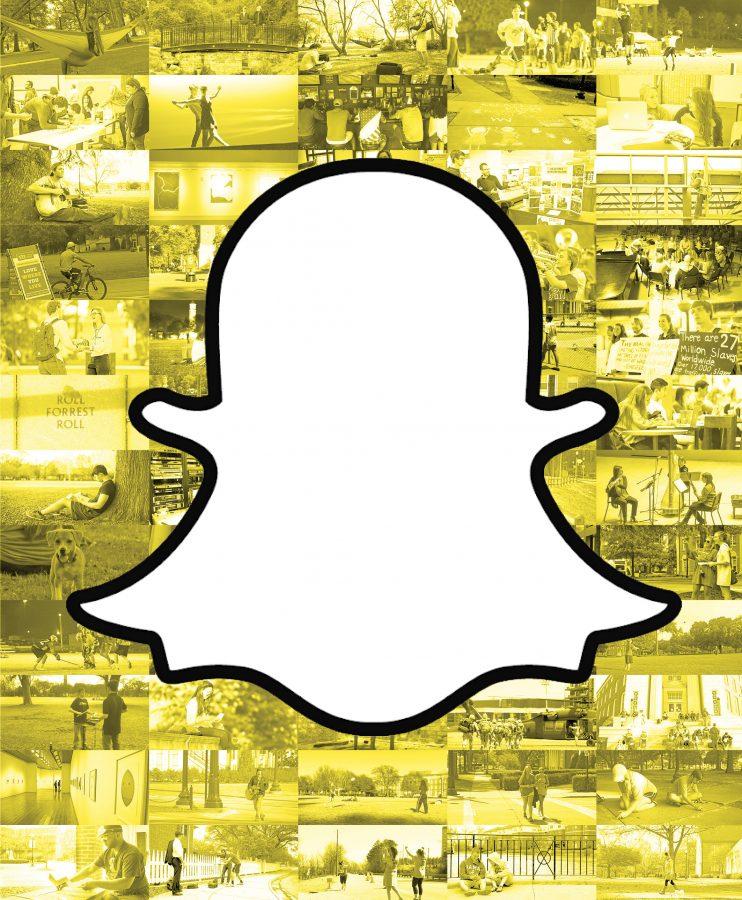When Helmi Henkin, a freshman majoring in psychology, came to The University of Alabama from Menlo Park, California, she was disappointed there wasn’t a single Snapchat geofilter in sight.
“Where I’m from every single neighborhood has a filter,” she said.
Since the initial release of geofilters, special overlays for Snaps that can only be accessed from certain locations, Snapchat has asked users to create their own. This past weekend, Black Warrior Film Festival had a geofilter anyone on the UA campus could use to commemorate their experience.
Growing up in Silicon Valley, Henkin and her friends followed technology like Alabamians follow college football. Everyone has every app, from Yik Yak to Tinder and everything in between. Snapchat first released Campus Stories at USC, UCLA, Penn State and UT. Many of Henkin’s friends from high school attend USC and UCLA, so she was familiar with the Campus Story before it was available at UA.
When Snapchat released the “Roll Tide” geofilter, she said she knew the University was next for the Campus Story feature.
Henkin said Campus Story could have been useful for prospective students who wanted to get a sense of what student life is really like. Snaps on a campus story last 10 seconds or less, like any other Snap, but can be replayed for 24 hours like Snaps uploaded to the My Story feature.
“They come and they can say, ‘Oh well, my Capstone woman just said all these nice things but let’s see what real-talk Alabama is like,’” Henkin said.
Christopher Lynn, a professor in the anthropology department, said the Campus Story feature had potential to share in a way other media cannot.
“It shines a light on the different activities and styles of life on campus in a way that say, a website doesn’t do, because the websites are frozen in time, they’re orchestrated to an extent,” he said.
Like all other Snaps, the Campus Story disappears. It follows a moment as it happens, and then moves on to the next one. Lynn said this helped people share what they were up to without taking up too much space in their lives or memory cards.
“I take a lot of pictures, and I just want to show them,” Lynn said. “I don’t really want to keep them. They end up cluttering up my life.”
He said when he tries to gather photos from department events, he finds most of them are hidden away in files no one remembers. The sheer number of photos people have prevents them from staying in sight.
“It’s ironic that the more we have, the less we preserve,” Lynn said.
Meredith Cummings, a professor in the journalism department, noted the addition of stories helped Snapchat grow its users when they realized crowdsourcing a story might be more interesting than following one person, as with the My Story feature.
“It worked because they reached, very quickly, one billion views per day on stories, which is significant because only a few months before that they were only at 500,000,” she said.
Cummings also mentioned the potential for the app to be used in news gathering. For example, if a dramatic event were to occur in a remote corner of campus, students at the scene could have sent Snaps to the campus story and shared them with anyone.
“It could be a really useful tool if that’s a direction Snapchat wants to go, but then again, Twitter is already there,” she said. “They have to do something to break out of the mold and I think that’s what they’re trying to do with the campus story.”
Henkin said she enjoyed the opportunity to peek into the lives of her peers, but that time was short-lived. After a couple of weeks, the feature disappeared with as little fanfare as it arrived.
On Jan. 27, Snapchat released Discover. The company didn’t hold a press conference or send a snap from Team Snapchat. The announcement for the update came through a Tumblr post.
Users can access exclusive content from CNN, Comedy Central, Cosmopolitan, Daily Mail, Snapchat, ESPN, Food Network, National Geographic, People, Vice, Yahoo! News and Warner Music. Unlike websites or other media apps, navigating Discover involves swiping and scrolling, rather than tapping and clicking. Users can even navigate away from the advertisements in the various channels.
“What’s innovative about it is unlike anything we’ve ever seen, where if you’re reading a story or a tease or a blurb and you click in, it takes you to that media’s website, and unlike anything else, all of the content for Discovery is mobile native,” Cummings said.
Like My Story and Campus Story, content in the Discovery feature disappears after 24 hours and is replaced with new content. CNN and Yahoo! News bring hard news to the table, and Cosmopolitan and ESPN provide entertainment.
Jan. 31, Snapchat premiered its first original series, “Literally Can’t Even” on its Snap Channel in Discover. In keeping with Snapchat’s ephemeral attitude, each episode disappears after 24 hours.
“I think that really caters to students,” Cummings said. “Being able to access world news and the best shade of lipstick all in the same 60 seconds.”
Words to Know Box
Geofilter – A special overlay for Snaps that can only be accessed in certain locations.
My Story – A feature that allows users to share Snaps with all of their contacts at once. Snap stories are available for 24 hours before they disappear.
Campus Story – A ‘Story’ that can be viewed and posted to by anyone in and around a particular college campus.
Discover – A feature that allows users to access content produced by various news and media outlets, including CNN, Cosmopolitan, Food Network, ESPN and more.







